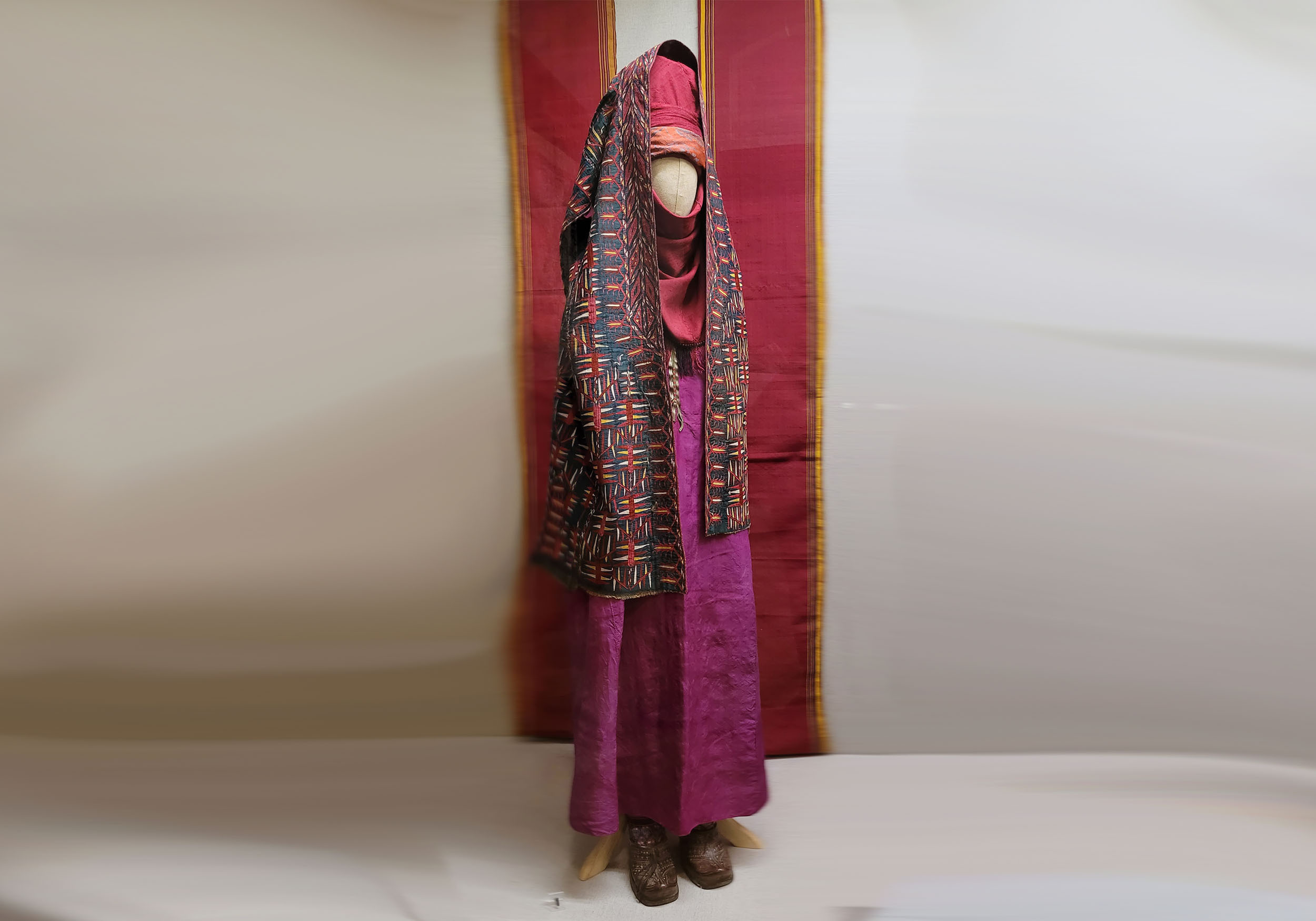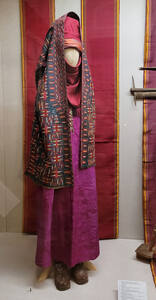Silk in the Culture of Central Asia and Eastern Turkestan

Silk farming and silk weaving among the Turkmens, a nation with a nomadic culture, is a unique phenomenon in the Eurasian silk history. The Turkmens and Teke of the Ahal and Merv Oases used to weave silk not with a designated machine, but with a narrow-beamed one, which was initially used for the production of wool fabrics. A dense heavy keteni fabric had a high status; it usually was red with yellow stripes along the hems; it was fabric meant for festive clothes. Nowadays, this fabric is one of the symbols of Turkmen culture, although since the mid-20th century, its production has moved from artisanal workshops to factories where it is made with viscous silk of different colors, or now even with synthetic fibers. In the 21st century, keteni for wedding garments is made with silk again.
1. Young woman’s attire. Mary Oasis. 1860s – early 20th century. Turkmens
2. Fabric samples. Turkmen SSR. 1930s – 1970s. Turkmens
3. Niddy-noddy for silk. Mary Oasis. Last third of the 19th century. Turkmens
4. Silk thread spindle. Sumbar River valley. 1st half of the 20th century. Turkmens



